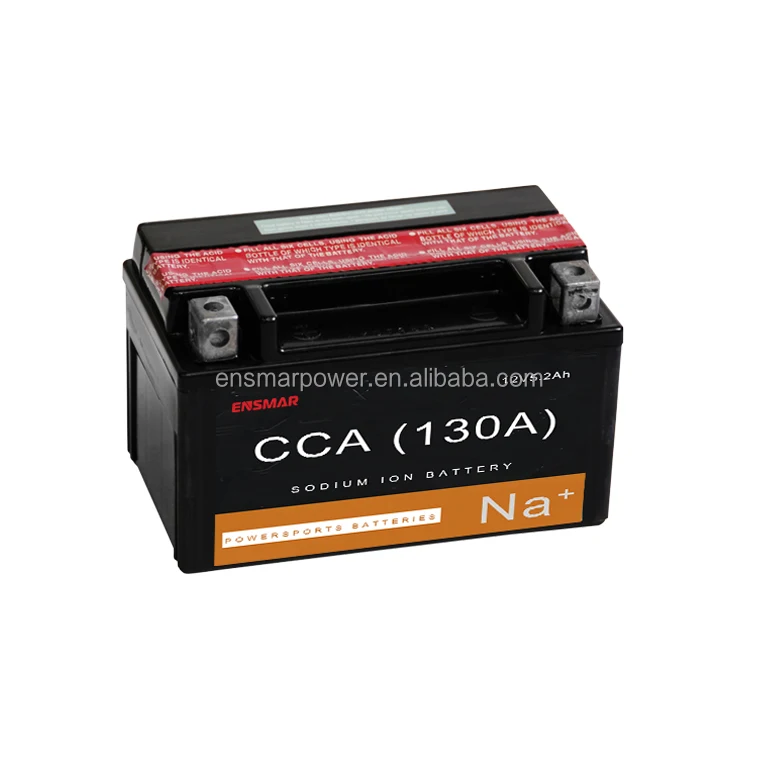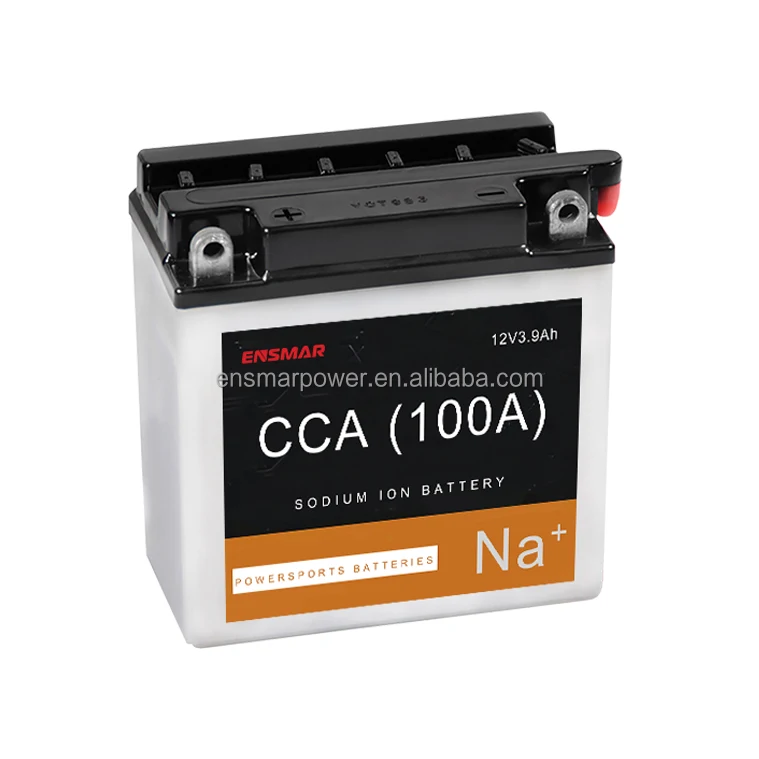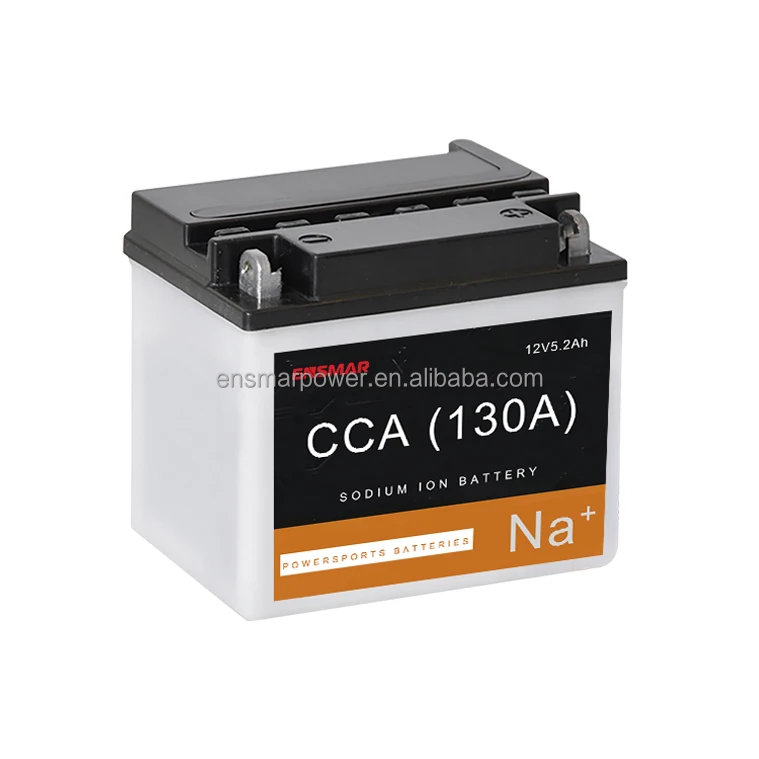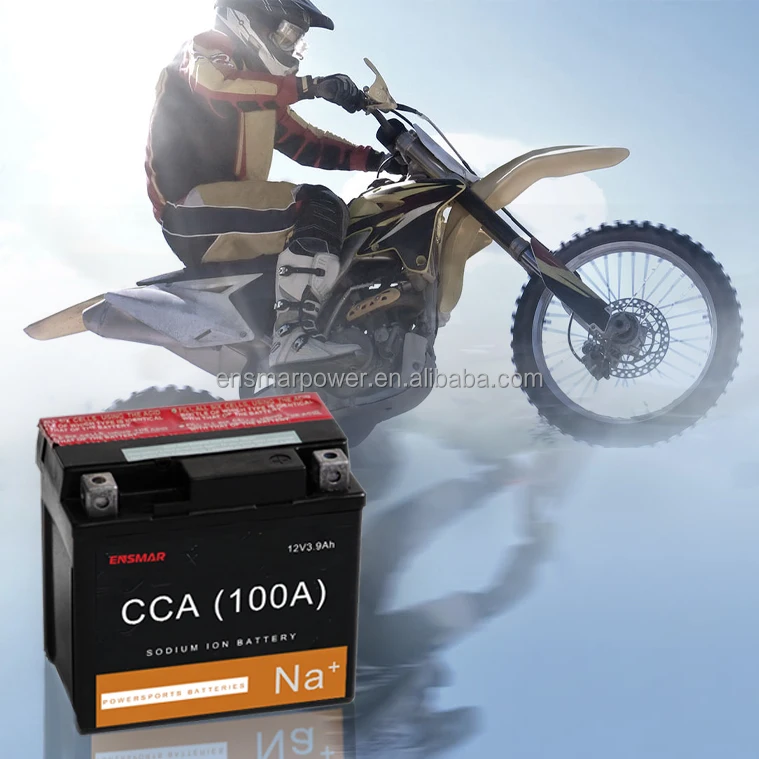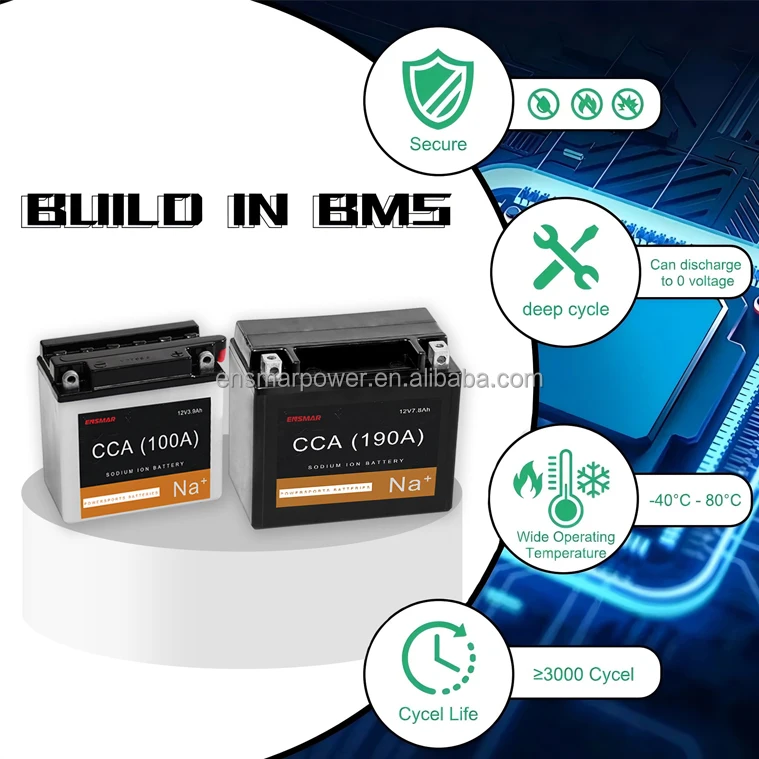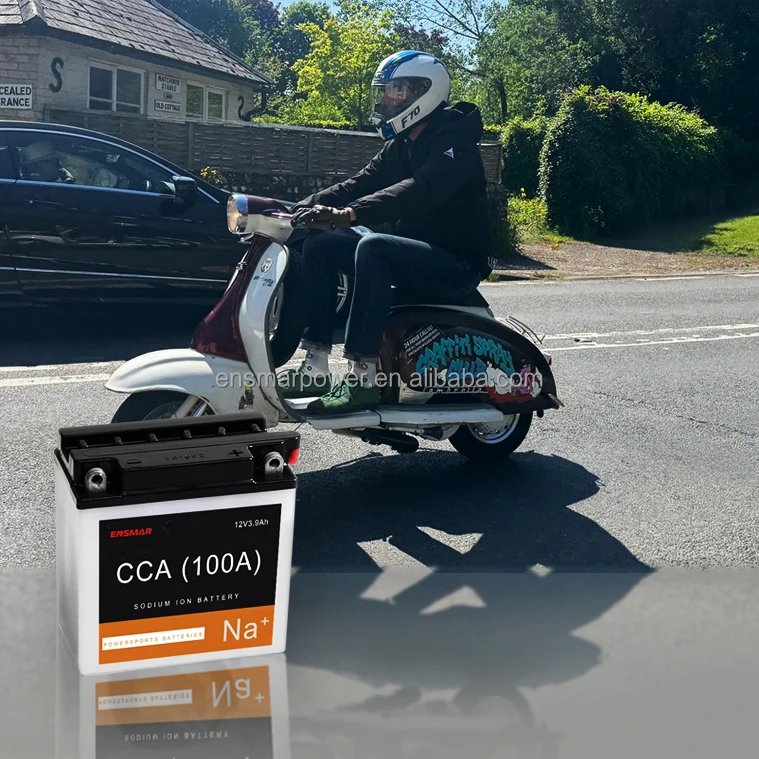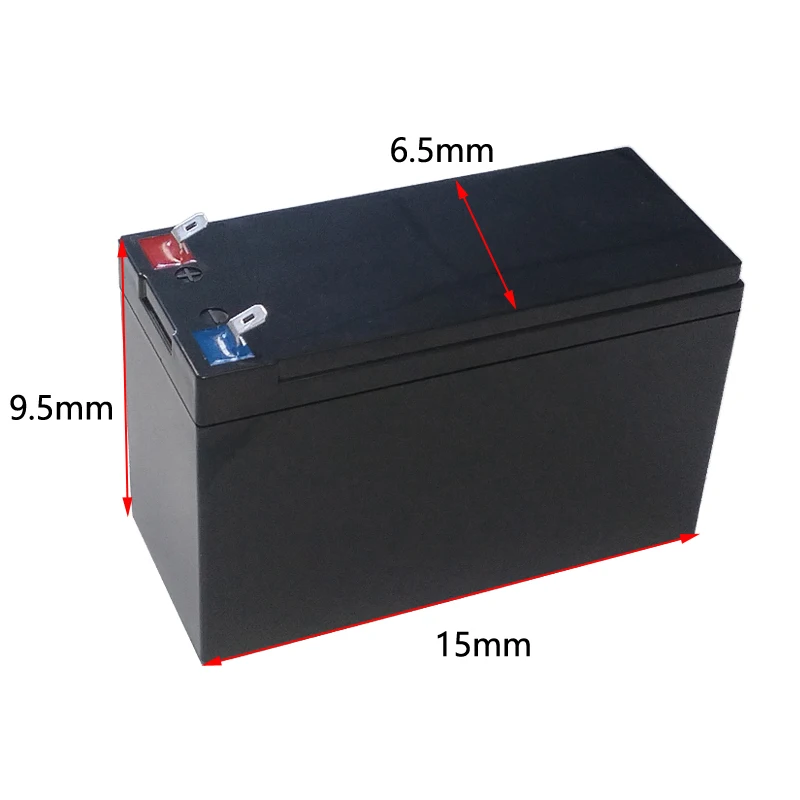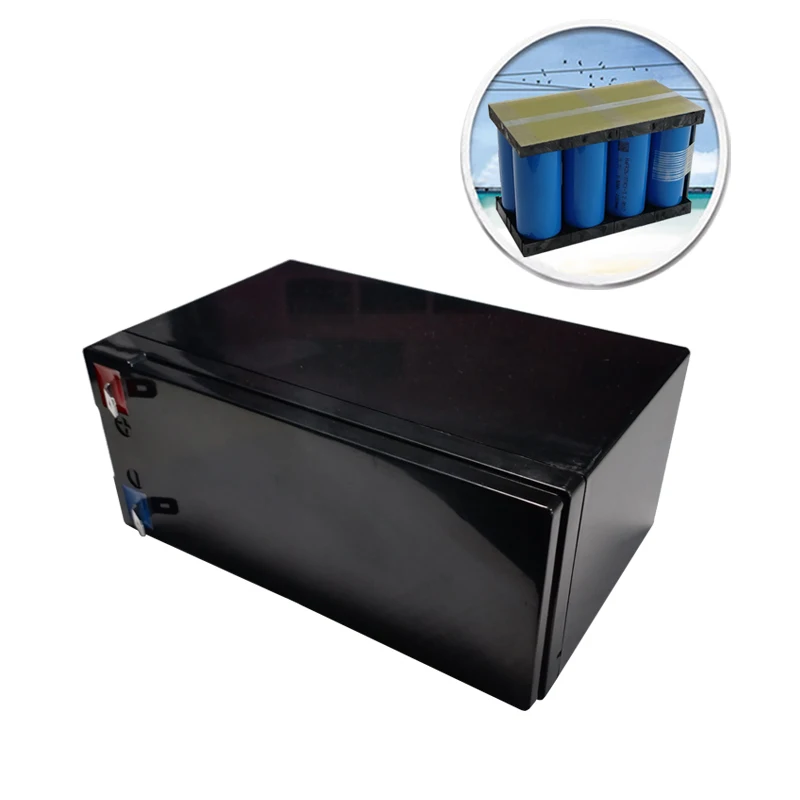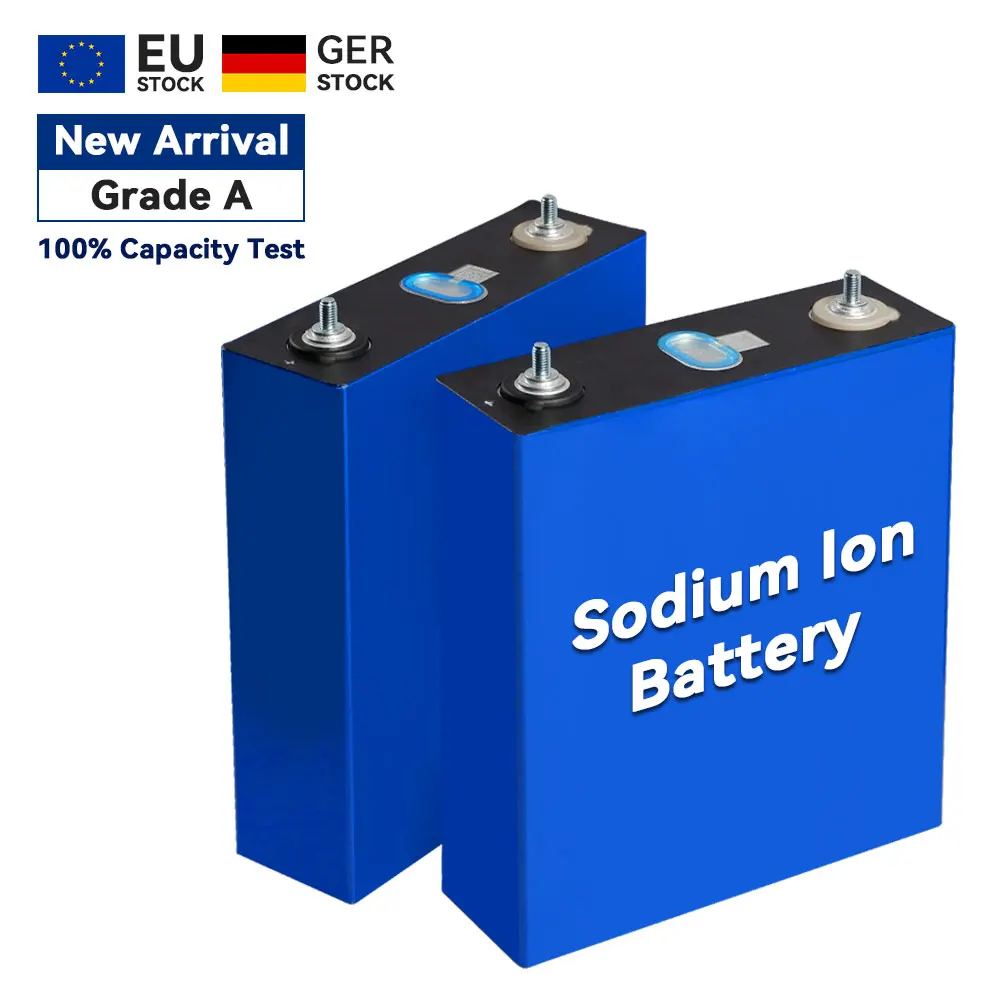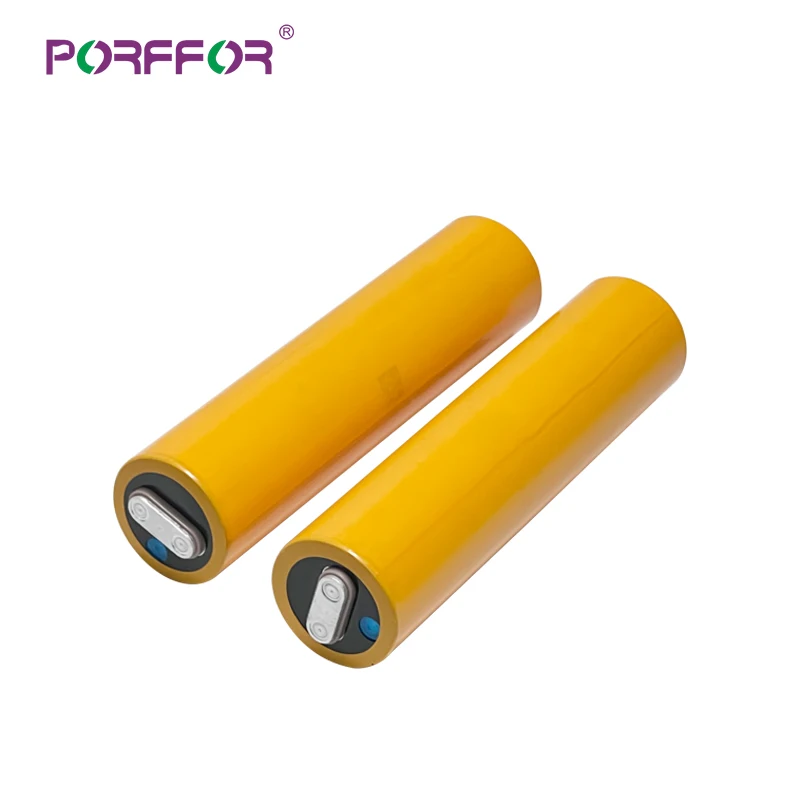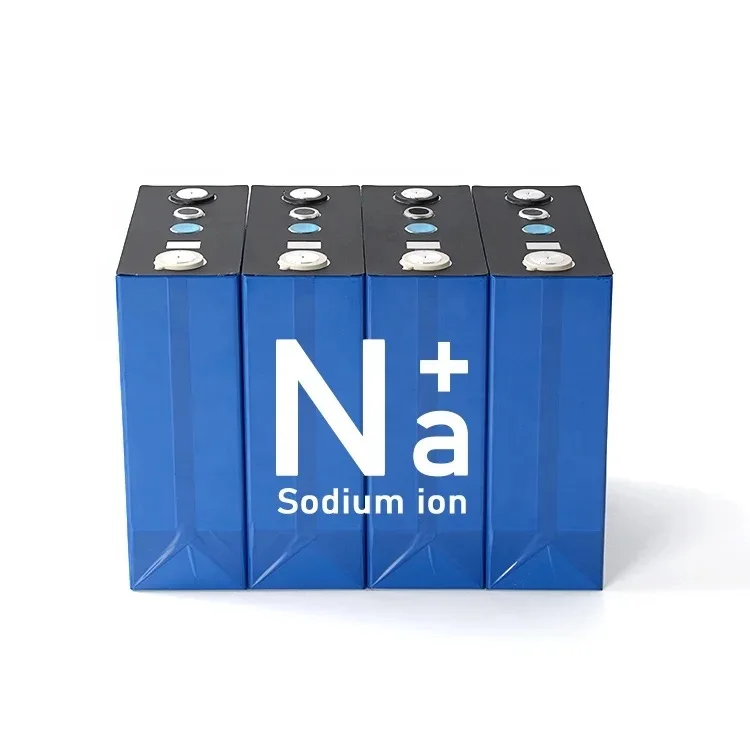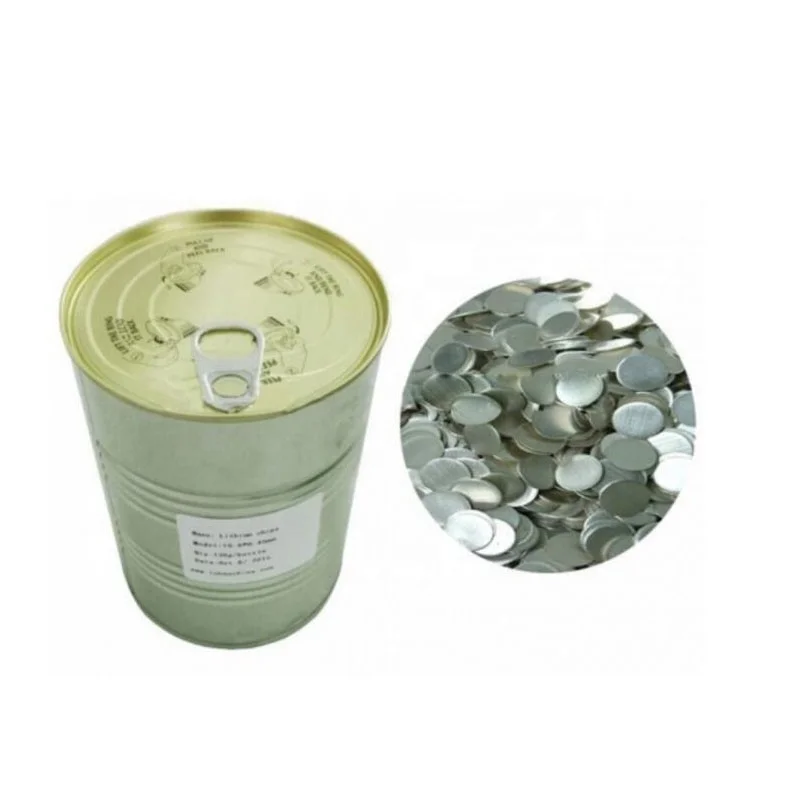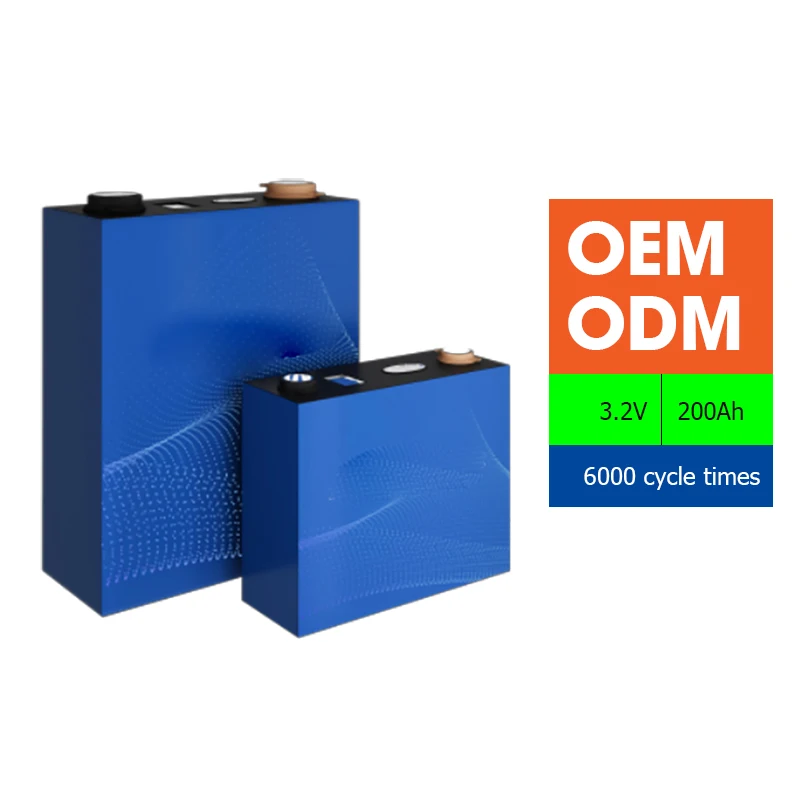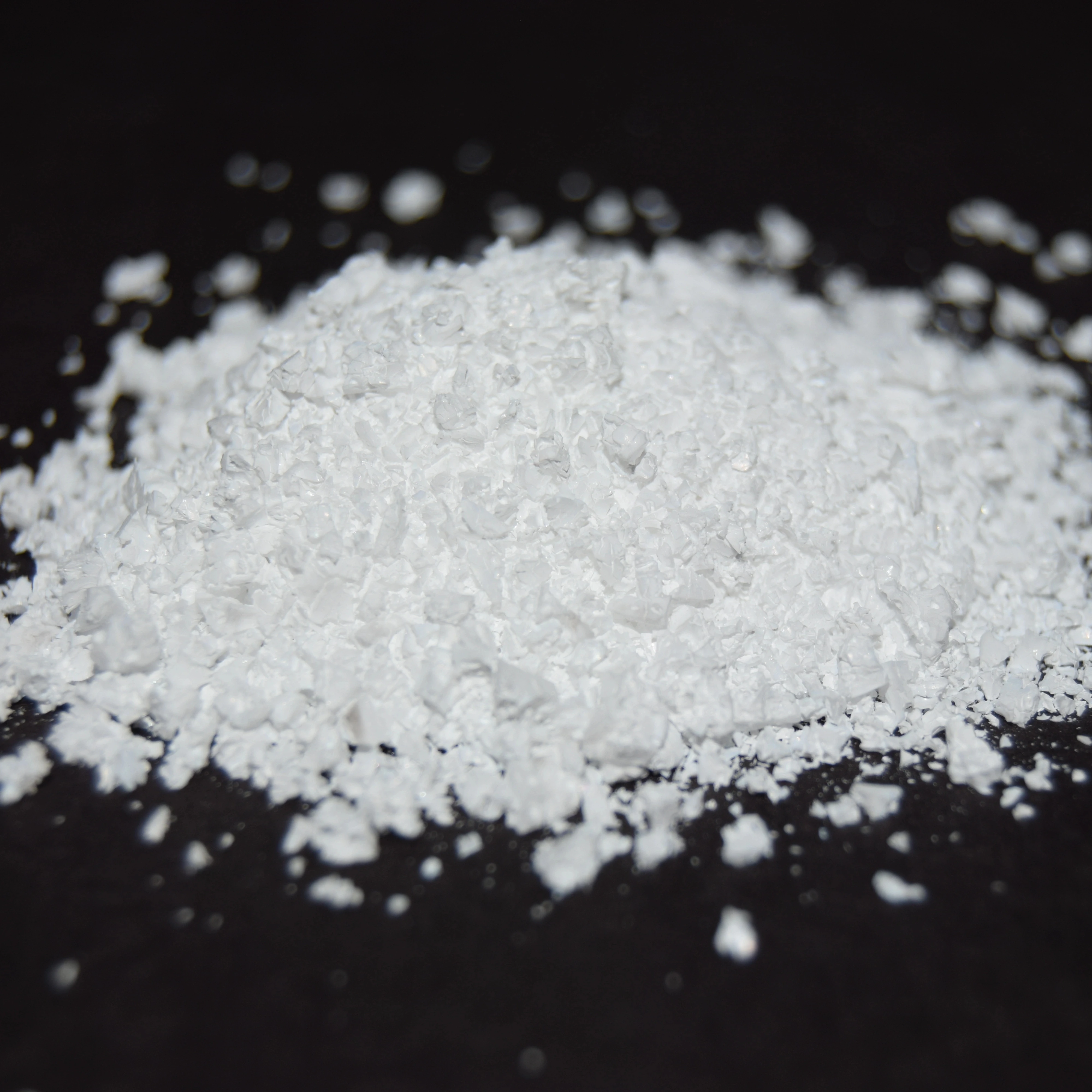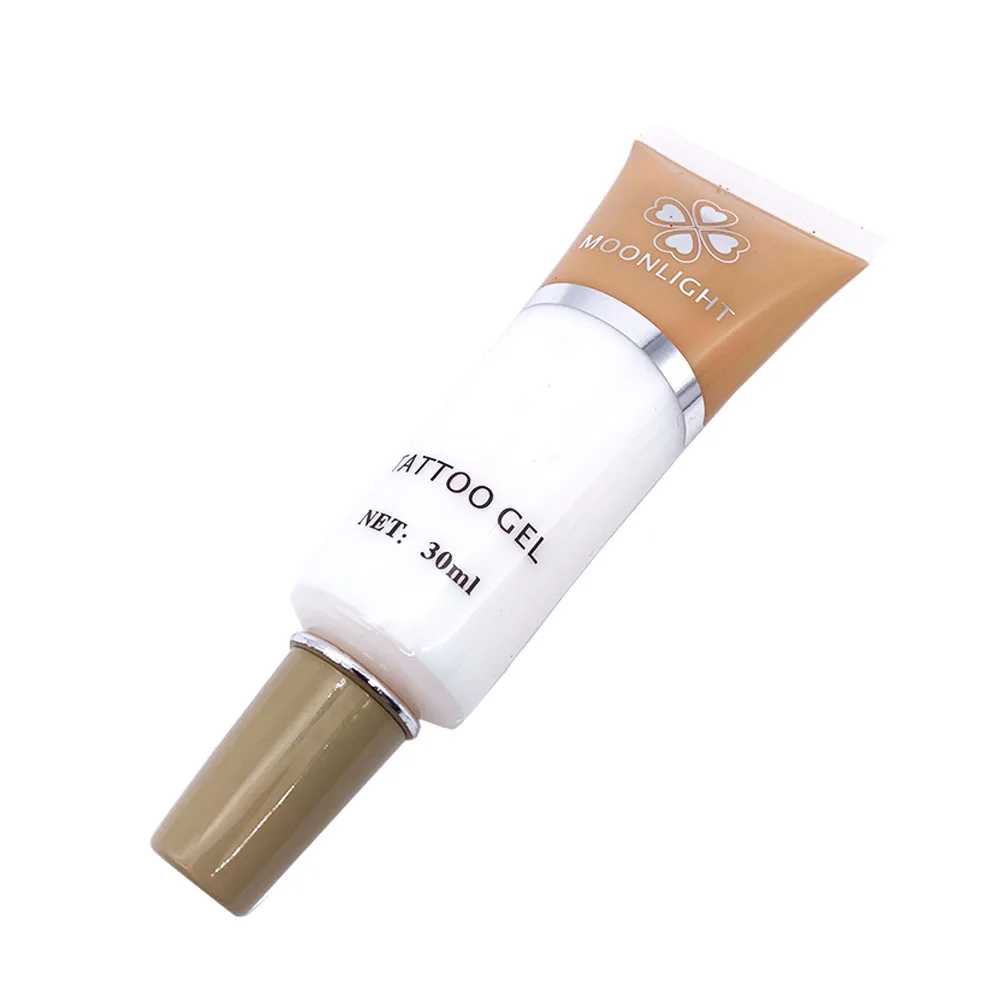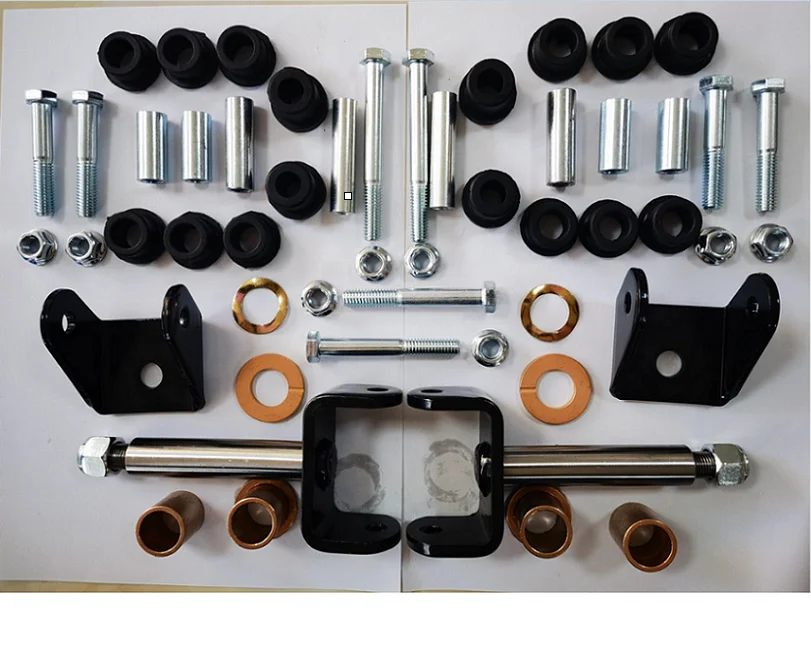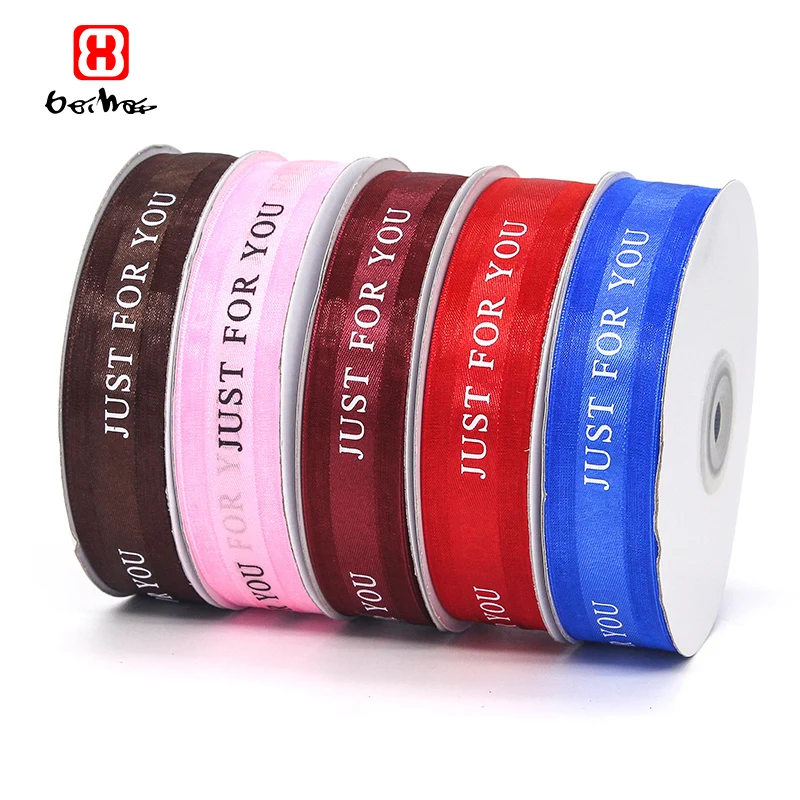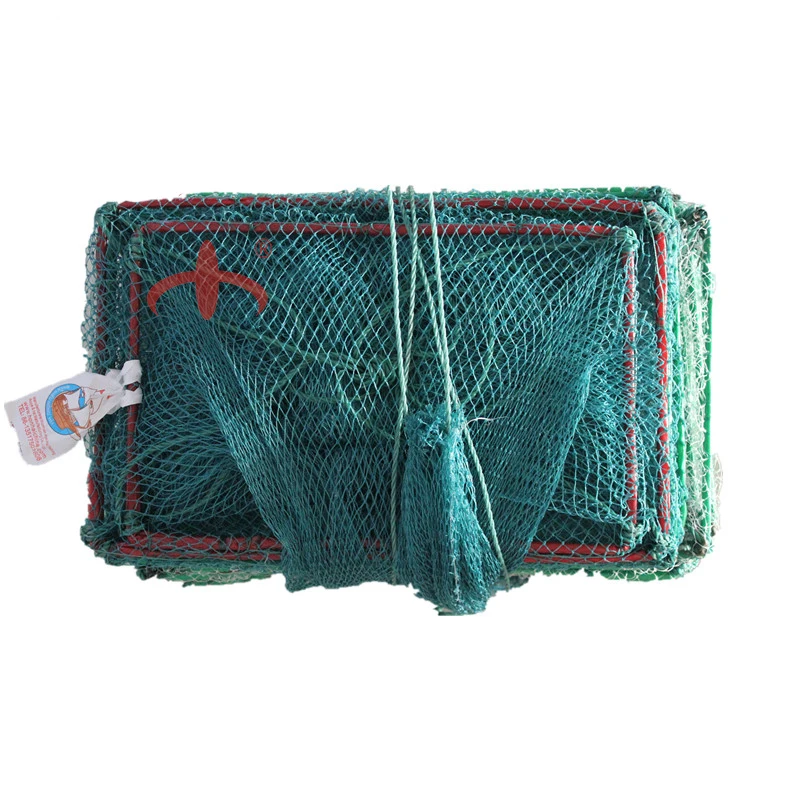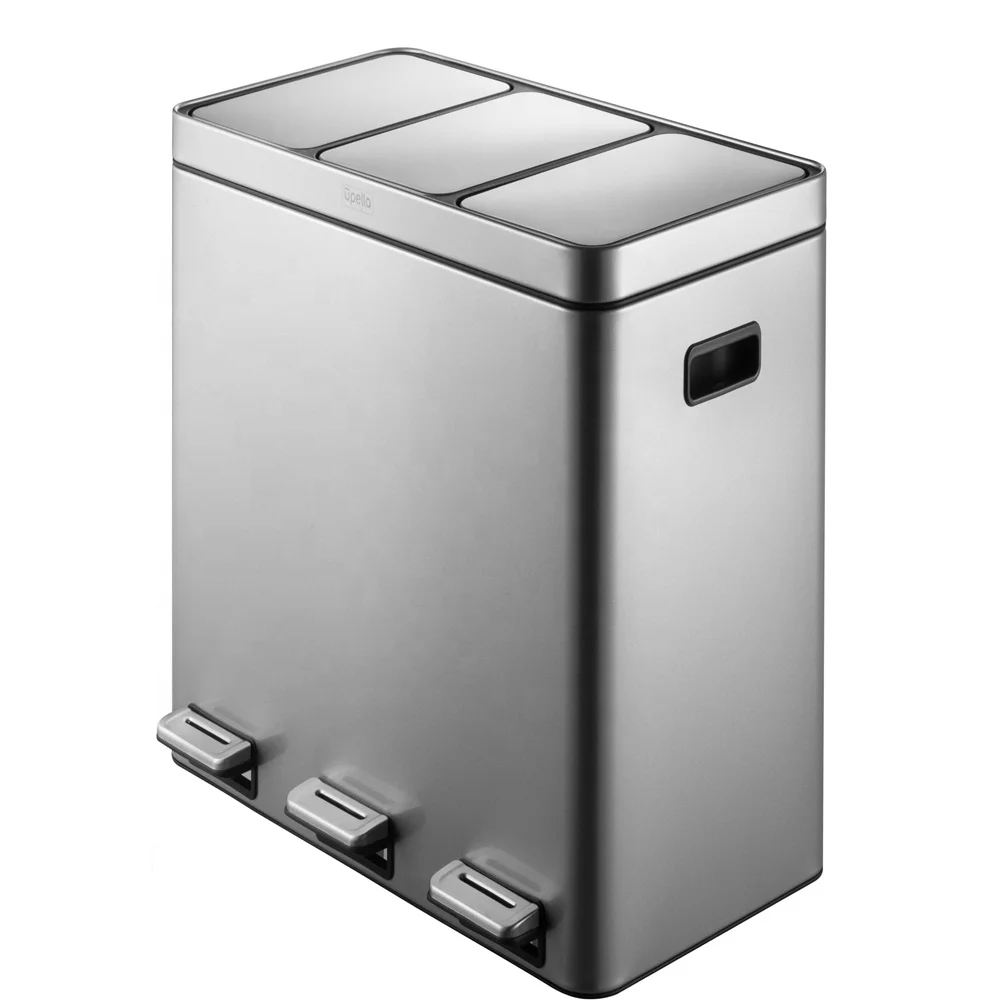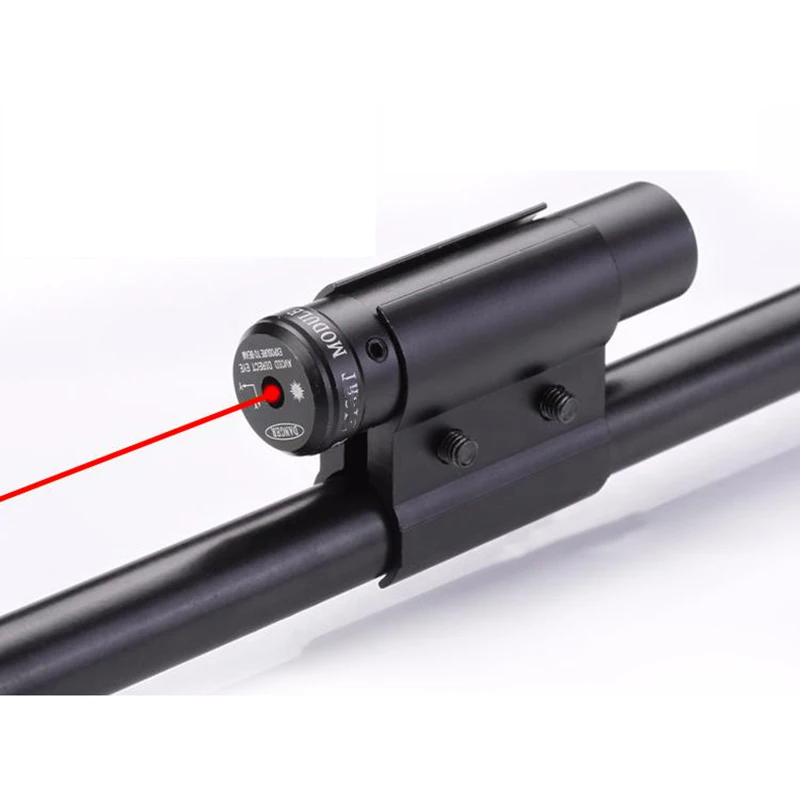new winter choice best expedition battery sodium ion yb16clb battery
- Category: >>>
- Supplier: Shenzhen Ensmar Technology Co. Ltd.Shenzhen Ltd.
Share on (1601260788604):
Product Overview
Description




| Model | Voltage | Capacity | CCA | Working Temp. | Lifespan | Size (mm) | Weight |
| BIO-ETX3 | 12V | 2.6Ah | 78A | -40 ~ 70℃ | 3000+ cycles | 70×113×87 | 1.11KG |
| BIO-ETX4 | 12V | 3.9Ah | 100A | -40 ~ 70℃ | 3000+ cycles | 71×114×106 | 1.4KG |
| BIO-ETX5 | 12V | 5.2Ah | 130A | -40 ~ 70℃ | 3000+ cycles | 88×151×94 | 1.75KG |
| BIO-ETX7 | 12V | 6.5 Ah | 164A | -40 ~ 70℃ | 3000+ cycles | 88×152×131 | 2.25KG |
| BIO-ETX8 | 12V | 7.8Ah | 190A | -40 ~ 70℃ | 3000+ cycles | 70×113×87 | 2.81KG |
1. Abundance and Affordability: Sodium is widely available, making sodium-ion batteries cheaper to produce compared to lithium-ion options. As demand rises for batteries in powersports applications like motorcycle batteries and lawn tractor batteries, sodium's abundance reduces material costs, making this technology a cost-effective alternative.
2. Environmentally Friendly: Sodium-ion batteries offer a greener solution compared to traditional lithium-ion batteries. They do not rely on scarce and ethically problematic materials like cobalt. This makes sodium-ion technology an environmentally sustainable choice for powering recreational vehicles such as Jet-Ski batteries and scooter batteries.
3. Safety and Durability: Sodium-ion batteries are generally safer, as they are less prone to overheating and thermal runaway, which are risks associated with lithium-ion technology. For vehicles like snowmobile batteries and quad batteries that are exposed to extreme environments, this improved safety is a key advantage, ensuring reliable performance in harsh conditions.
4. Performance in Extreme Temperatures: Powersports vehicles often operate in environments with fluctuating or extreme temperatures. Sodium-ion batteries perform better in cold or hot climates, making them suitable for vehicles like UTV batteries and lawn mower batteries that must endure diverse weather conditions.
What should we consider when choose motorcycle batteries?
1. Battery Type: There are three main types:
Lead-acid: Affordable and reliable, but heavier and requires maintenance.
AGM (Absorbent Glass Mat): Maintenance-free, more durable, and offers better performance.
Lithium-ion: Lightweight, long-lasting, and high-performance but more expensive.
Sodium-ion: Lightweight, long-lasting, well performance on safety and cold temperature, cost-effective
2. Cold Cranking Amps (CCA):
CCA measures the battery’s ability to start in cold temperatures. Choose a battery with a CCA rating suitable for your climate and engine size.
3. Capacity (Ah):
Ampere-hour (Ah) indicates how long the battery can power your bike. Ensure the battery’s capacity meets your motorcycle’s electrical needs.
4. Size and Fit:
Ensure the battery physically fits your bike’s battery compartment and has the correct terminal configuration.
5. Durability:
If you ride in extreme conditions, opt for a battery that resists vibration and is weather-resistant for longer lifespan and reliability.
6. Maintenance:
Consider whether you prefer a maintenance-free battery like AGM or a traditional lead-acid battery that requires water refilling.
7. Lifespan:
Check the expected lifespan, as lithium-ion batteries usually last longer than lead-acid ones.
8. Price:
Balance between cost and performance. While lithium-ion batteries are pricier, their longevity may make them cost-effective in the long run.
Considering these factors will help you choose a reliable motorcycle battery that fits your riding style and environmental conditions.
We Recommend
New Arrivals
New products from manufacturers at wholesale prices
